In this article, we will discuss the types of transformers. An electrical transformer is a static electrical machine that transforms, i.e. increases or decreases the level of ac voltage and current without changing its frequency.
An electrical transformer is one of the most important and extensively used electrical machine power systems. We can classify electrical transformers into different types based on different parameters. The important classifications of transformers are described in the following sections.
Types of Transformers
Transformers can transform the primary side voltage into the required secondary voltage according to the turn ratio of the transformer.
The relationship between the primary and secondary voltage of the transformer can be classified into three categories.
- Step Up Transformer
- Step Down Transformer
- One-to-One Transformer
Transformers can also be classified into two types based on their core construction, i.e.
- Core Type Transformer
- Shell Type Transformer
- Ferrite core Transformer
- Toroidal Transformer
- Air core Transformer
Transformers are also classified into the following four types depending on the application,
- Power Transformer
- Distribution Transformer
- Auto Transformer
- Instrument Transformer
Now, let us discuss the types of transformers in detail one by one.
1. Step Up Transformer
An electrical transformer that has a lesser number of turns in the primary winding and a greater number of turns in the secondary winding so that it can increase the level of input voltage is known as a step-up transformer. Hence, a step-up transformer is one which produces an output voltage greater than the input voltage.
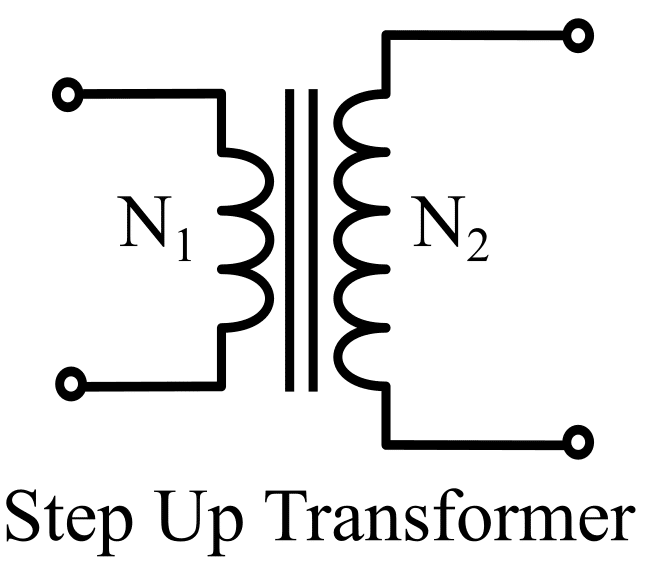
For a step-up transformer, the following relation exists,

Where N1 and N2 are the primary and secondary winding turns respectively, V1 and V2 are the primary and secondary voltage respectively, and I1 and I2 are the primary and secondary current respectively.
Step-up transformers are used in the voltage stabilizers & inverters. A step-up transformer is used to boost the voltage for the transmission of power to reduce transmission losses.
The step-up transformer boosts the voltage in the electrostatic precipitator (ESP) to remove the dust and particles from the dust-laden gas.
2. Step Down Transformer
A step-down transformer is a type of transformer that has a greater number of turns in the primary winding and a lesser number of turns in the secondary winding so that it can reduce the level of input voltage is known as a step-down transformer. Hence, a step-down transformer is one which produces an output voltage less than the input voltage.
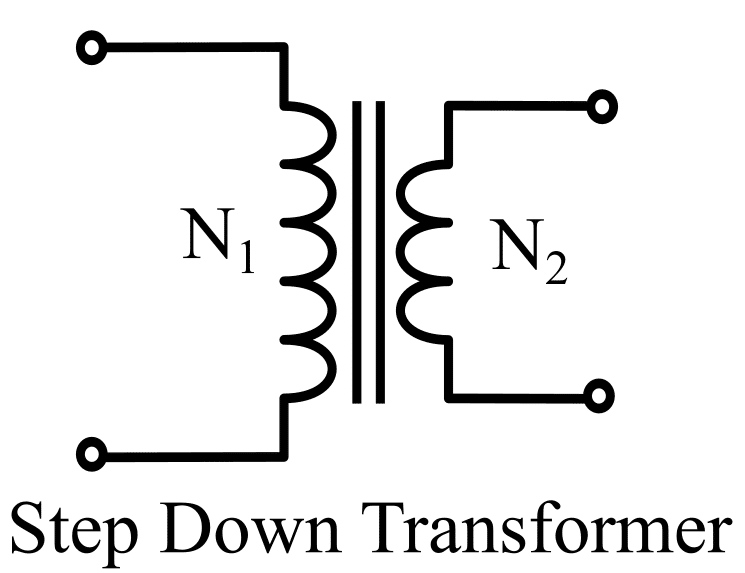
For a step-down transformer, the following relation exists,

Step-down Transformers are widely used in electrical & Electronics applications. The electronic circuits need 5V, 6V, 9V, 12V, 24V & 48 V for its operation. The single-phase supply 230 V AC is converted into desired AC voltage level by a step-down transformer and then it is converted into DC voltage by a rectifier circuit. They are widely used in the power adapters of electronic gadgets.
(3). One-to-One Transformer- Isolation Transformer
An electrical transformer that has an equal number of turns in both primary winding and secondary winding is called a one-to-one transformer (1:1 transformer). It is also known as an isolation transformer as it is mainly used to isolate two circuits electrically, but connect them to transmit power magnetically.
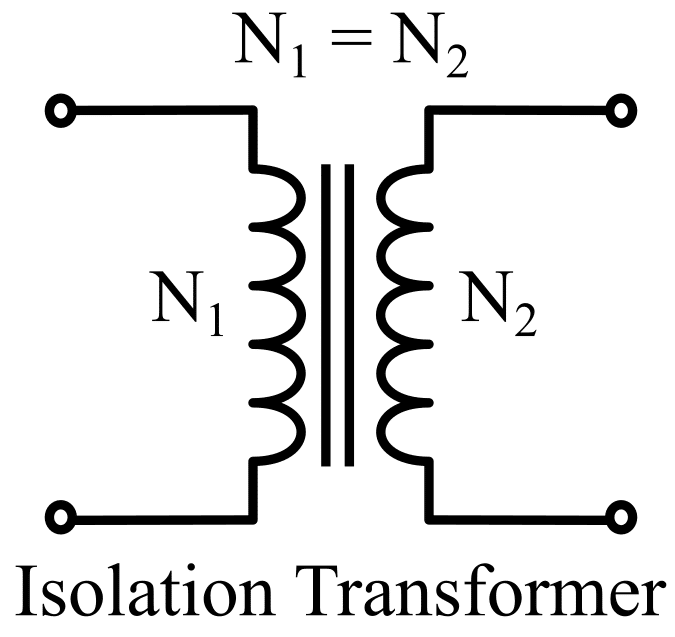
For an isolation transformer,

The isolation transformer, like other transformers, electrically isolates the primary and secondary. The turn ratio of the isolation transformer is unity and thus the secondary voltage is equal to the primary voltage. The isolation transformer provides impedance to surge voltage & transients and thus it protects sensitive electronic equipment.
4. Core Type Transformer
An electrical transformer in which the primary winding and the secondary winding are placed around two different limbs of the core as shown in the following figure is called a core-type transformer.
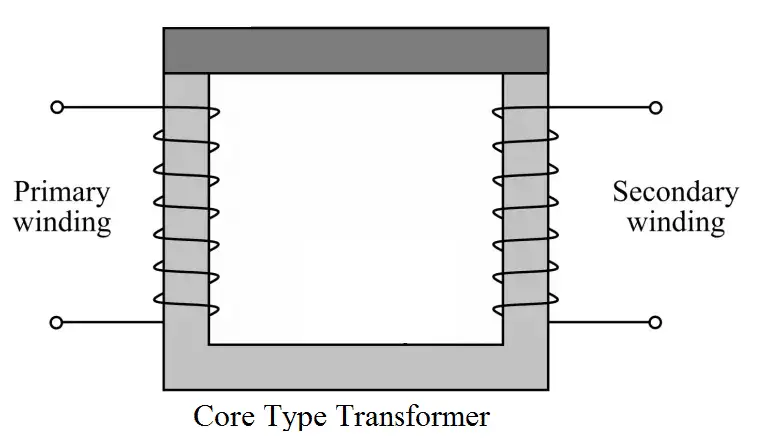
The iron core has excellent magnetic properties and there is minimum flux leakage and almost all the flux links to the primary and secondary winding and it has higher efficiency.
We can select the different types of core plates as per the requirements. The core plates are available in E, I, U, and L, shapes. The thin plates are bunched together to make a core to reduce the eddy current losses.
5. Shell Type Transformer
An electrical transformer in which both primary and secondary windings are wound around the central limb of the core is called a shell-type transformer. Shell type transformer is shown in the following figure.
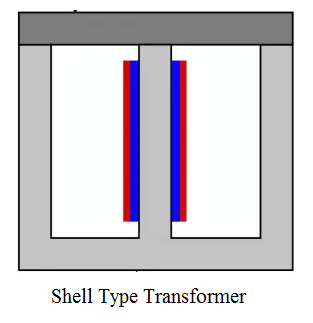
This type of transformer uses a double magnetic circuit. It is suitable for high voltage low current applications due to slightly poor ventilation.
6. Power Transformer
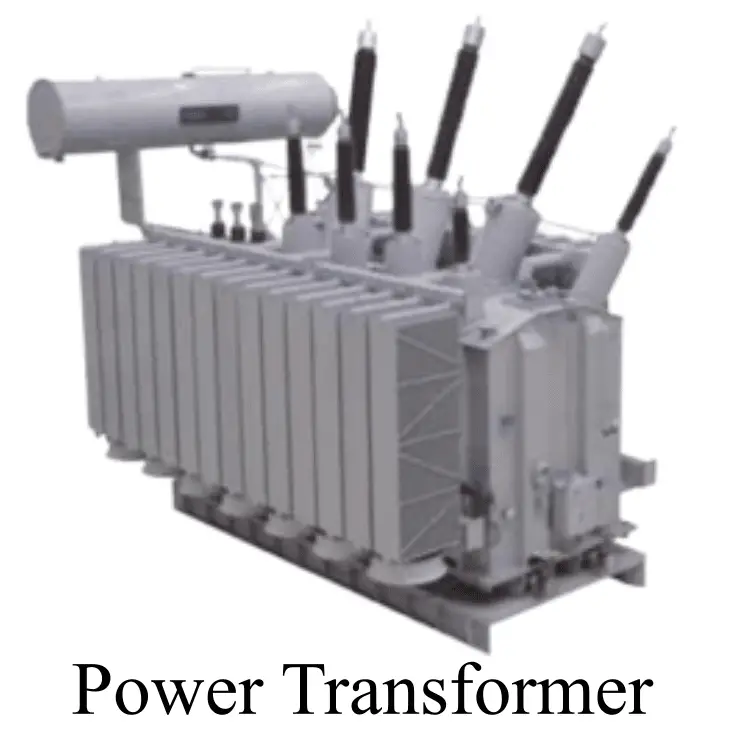
Power transformers are the type of transformer that is primarily designed to operate at an almost constant load that is nearly equal to their kVA rating. These transformers give maximum efficiency at full load or at a load nearly equal to their full load. Hence, these are used in power generation and transmission systems. Power transformer mostly has both primary and secondary winding connected delta configuration.
7. Distribution Transformer
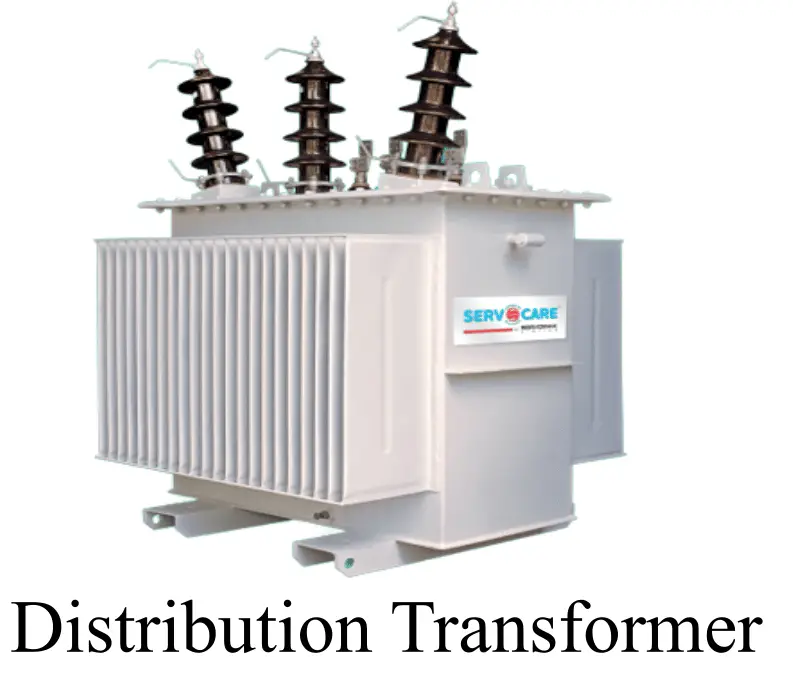
A distribution transformer, as its name implies, is one which is designed to distribute electrical power to loads. These transformers are usually subjected to variable loads that are considerably lesser than their full load value. Hence, they are designed to have maximum efficiency at a load between ½ and ¾ of the full load.
In a distribution transformer, the primary winding is connected in a delta, while the secondary winding is connected in a star configuration.
8. Auto Transformer
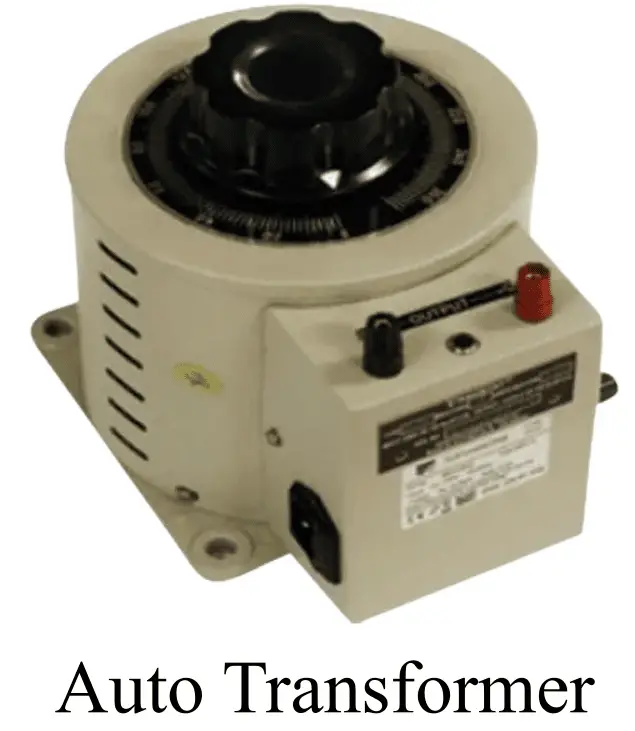
An electrical transformer that has only winding that serves as both primary and secondary winding is called an autotransformer. Autotransformer has tappings on their windings to get a variable output voltage from a single input voltage.
Since the autotransformer has only one winding, thus it transmits power electrically as well as magnetically from the primary to the secondary side.
Autotransformer is mainly used in laboratories, starting for induction motors, in test benches, etc.
9. Instrument Transformer
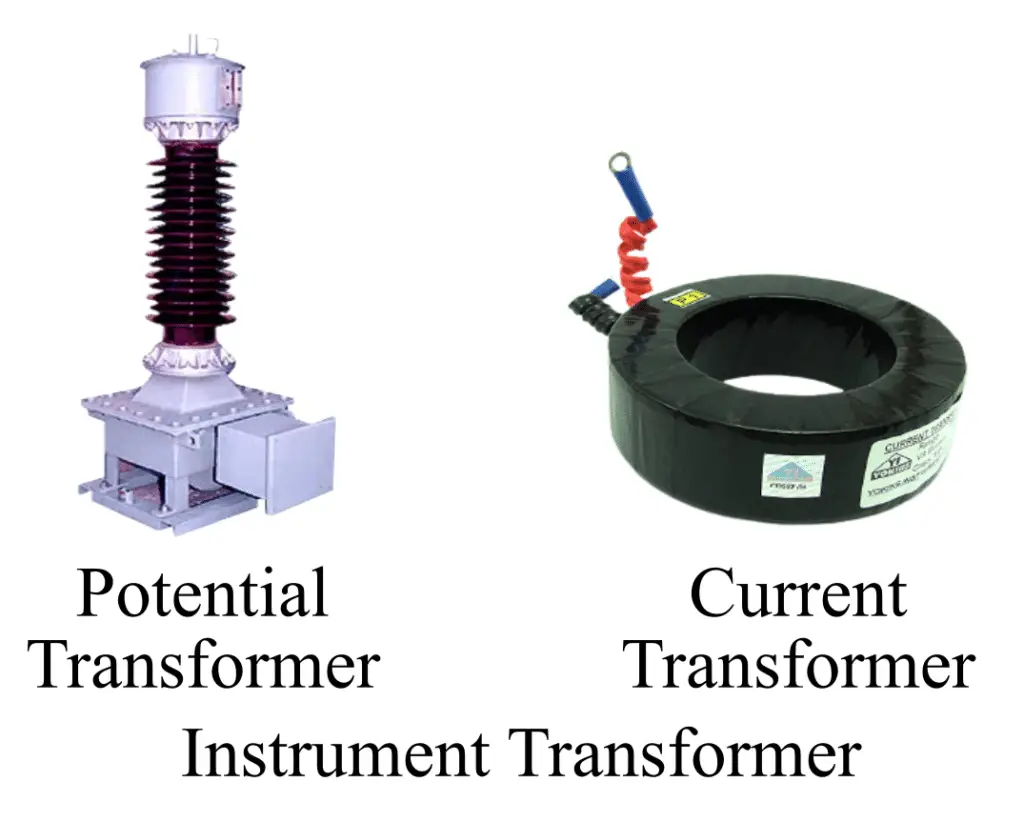
Instrument transformers are specially designed transformers that are used for protection and measurement in electrical power systems. There are two types of instrument transformers namely, current transformer (CT) and potential transformer (PT).
A current transformer or CT is one that reduces the high values of current in transmission lines to a lower measurable value than an ordinary ammeter.
A potential transformer or PT is one that decreases the high voltage to a lower voltage so that it can be measured with a normal voltmeter conveniently.
10. Ferrite Core Transformer
A transformer that has a ferrite core is called a ferrite core transformer. The permeability of the ferrite core is very high.
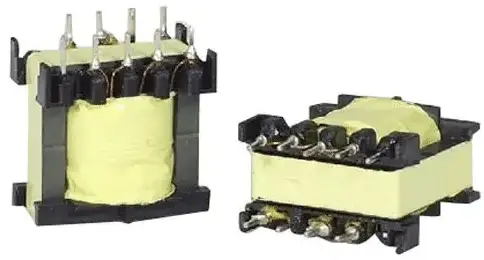
The ferrite core transformers are widely used in high-frequency applications because it offers very low losses at high-frequency operation. The ferrite core transformers are widely used in switch mode power supply (SMPS), RF-related applications, etc.
11. Toroidal Core Transformer
A transformer that uses toroid-shaped core materials like iron core or ferrite core is called a toroidal transformer. Toroid is a ring or donut-shaped core material and it has superior electrical performance.
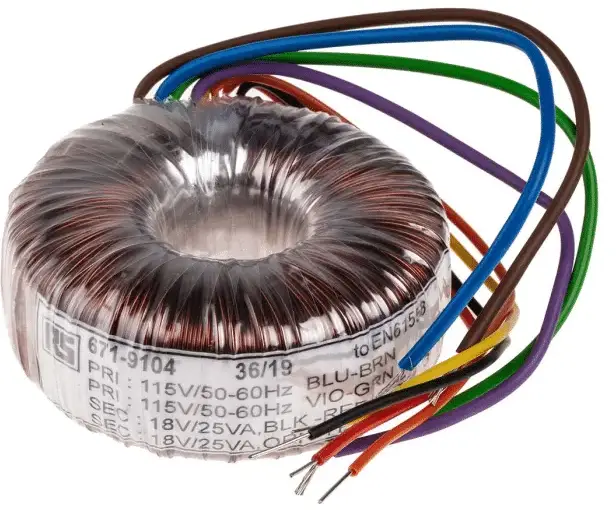
The toroidal transformer offers very high Q, low leakage reactance, and high inductance. The ring shape toroid leads to low leakage reactance and offers very high inductance and Q factors.
12. Air Core transformer
The primary and secondary winding of the air core transformer does not wound on any magnetic material. The flux pass through the air and air acts as a core of the transformer.
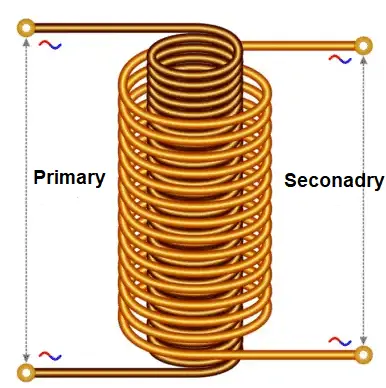
The air core transformer produces low mutual inductance in comparison to iron and ferrite core transformers.
13. Pulse Transformer
The pulse transformer is used in various electronic circuits for pulse generation in an isolated environment. The transformer is PCB mounted and it generates a constant magnitude pulse.

The pulse transformers provide isolation between the primary and secondary and output isolated pulse for digital logic gates or drivers.
Hence, this is all about the classification or types of transformers in electrical.